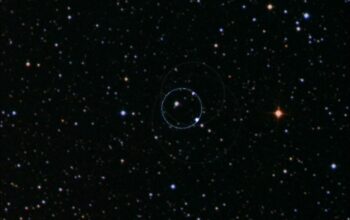The realm of astrophysics is often characterized by its propensity for revealing the extraordinary, and exotic pulsars epitomize this characteristic. These enigmatic celestial bodies, born from the remnants of supernovae, manifest in numerous configurations, each presenting unique phenomena that challenge our conventional understanding of physics. The recent emphasis on exotic pulsars and advanced materials underscores a transformative narrative in the European scientific discourse, culminating in the prestigious Körber European Science Prize.
Exotic pulsars, unlike their conventional counterparts, are distinguished by extreme rotational speeds, unique magnetic fields, and occasionally, their emission of potent beams of radiation. Among them, magnetars and millisecond pulsars arise as particularly fascinating entities. Magnetars, with their extraordinarily strong magnetic fields, are theorized to be the most magnetic objects in the universe. Their magnetic fields can exceed 1015 gauss, presenting an excellent opportunity for researchers to explore the fundamental interactions between magnetism and matter in conditions that are unattainable under terrestrial environments.
Studying exotic pulsars allows physicists to probe the complex realm of quantum chromodynamics and the behavior of matter under extreme pressures and densities. Theoretical models suggest that matter in the cores of neutron stars, especially those that can be classified as pulsars, may exist in states never before replicated in laboratories on Earth. These conditions prompt contemplation about states such as the color superconductor phase, where fundamental particles exhibit peculiar behavior that defies typical understandings.
The correlation between the studies of these pulsars and advanced materials research is profound. Exotic materials, particularly under extreme conditions, hold a significant potential for innovative applications. The exploration of high-density states can lead to insights relevant to the development of new materials, potentially revolutionizing technology sectors ranging from computing to energy storage. For instance, the synthesis of superconductors that operate at ambient temperatures has long been a coveted goal felt in both scientific and industrial arenas. Pulsar research may indeed provide the clues needed to unlock this elusive achievement.
Recent developments in observational techniques have augmented our comprehension of pulsars, offering empirical substantiation to theories that span the astrophysical continuum. The deployment of advanced radio telescopes, such as the Square Kilometer Array, is illustrative of the cutting-edge technologies facilitating unprecedented observational capabilities. These instruments empower astronomers to detect pulsars with remarkable precision, revealing intricacies of their behavior that have heretofore remained obscured. As researchers refine their models in light of new findings, we edge closer to a more holistic understanding of the universe’s fabric.
Contemplating the societal implications of this research underscores an essential narrative thread. The extensive collaborations between astrophysicists and material scientists foster an interdisciplinary environment that broadens the scientific horizon. The Körber European Science Prize serves to illuminate these intersections, recognizing significant contributions to our understanding of both astrophysics and material science. Such interdisciplinary acknowledgment is a clarion call for the scientific community to embrace a broader perspective, one that acknowledges the interconnected nature of various domains of inquiry.
In contemplating the implications of pulsar studies, it becomes evident that exotic pulsars may provide a gateway to unraveling the universe’s earliest conditions immediately following the Big Bang. The remnants of these cosmic events linger in the properties and behaviors exhibited by pulsars, potentially offering revelations about the genesis of matter itself. As researchers delineate the processes that govern pulsar formation and decay, they may uncover insights that redefine foundational principles in both cosmology and particle physics.
Furthermore, the application of knowledge gleaned from pulsar observations extends beyond the cosmic scale. The mechanisms governing rapid rotation and extreme conditions inform various fields within modern physics. For instance, materials engineered to withstand high-energy environments are critical in the development of next-generation propulsion systems for space exploration. In such ventures, the lessons drawn from pulsar behavior may unleash innovation that transcends terrestrial boundaries.
The recent focus on exotic pulsars also harbors the potential to kindle public interest and provoke curiosity regarding physics and astronomy. As the narrative of discovery unfolds, it invites a wider audience to engage with the complexities of the universe. The dual lenses of astrophysics and material science provide fertile ground for educational outreach, inspiring not only future scientists but also cultivating a scientifically literate populace. By emphasizing the serendipitous connections between the cosmos and everyday life, the scientific community can engender enthusiasm and perhaps even societal movements advocating for increased funding and support for scientific pursuits.
In conclusion, the ascendance of exotic pulsars within the context of the Körber European Science Prize signifies more than mere recognition of individual achievements; it symbolizes a paradigm shift that encompasses the interplay of astrophysics and material science. This dynamic interplay elucidates profound mysteries of the cosmos while simultaneously paving the way for innovations that can revolutionize technology. As we stand on the precipice of discovery, continued dedication to multidisciplinary collaboration will be paramount. The pursuit of knowledge amidst the wonders of exotic pulsars not only expands the confines of human understanding but also ignites a collective curiosity that is essential for the advancement of science and society alike.










